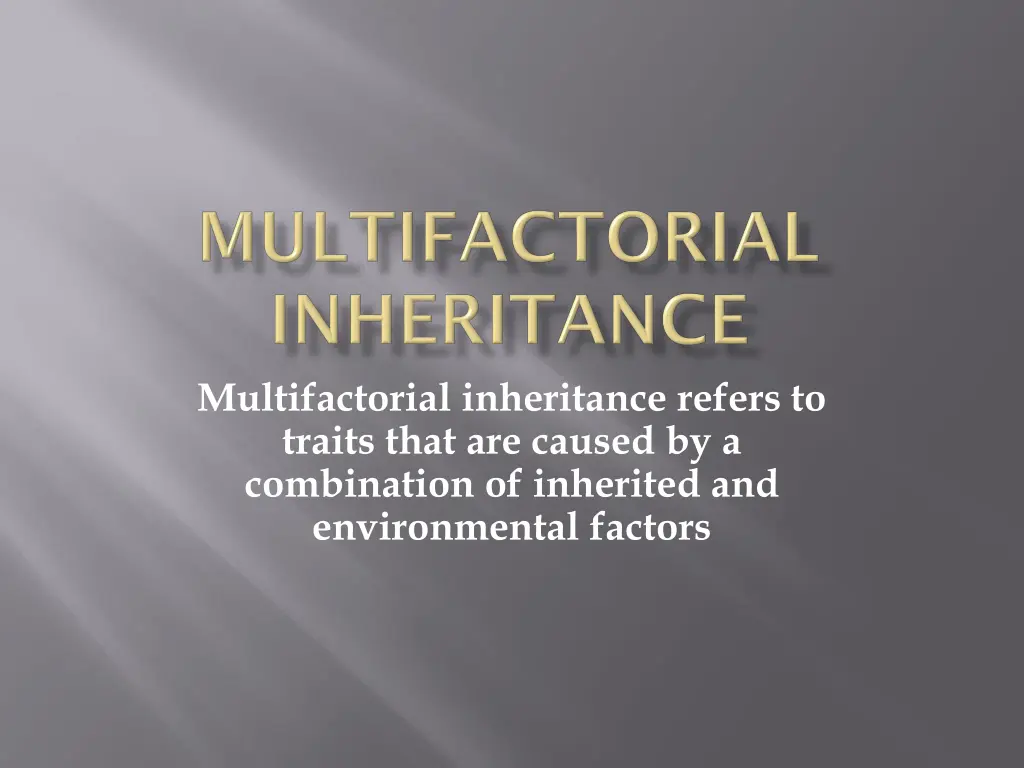
Understanding Multifactorial Inheritance in Genetics
Multifactorial inheritance involves traits influenced by both genetics and the environment, leading to varied risks of recurrence and prevalence rates across different disorders. Conditions like congenital malformations, heart disease, and adult-onset ailments are examples of multifactorial inheritance.
Uploaded on | 1 Views
Download Presentation

Please find below an Image/Link to download the presentation.
The content on the website is provided AS IS for your information and personal use only. It may not be sold, licensed, or shared on other websites without obtaining consent from the author. If you encounter any issues during the download, it is possible that the publisher has removed the file from their server.
You are allowed to download the files provided on this website for personal or commercial use, subject to the condition that they are used lawfully. All files are the property of their respective owners.
The content on the website is provided AS IS for your information and personal use only. It may not be sold, licensed, or shared on other websites without obtaining consent from the author.
E N D
Presentation Transcript
Multifactorial inheritance refers to traits that are caused by a combination of inherited and environmental factors
1- The risk of recurrence is related to the incidence of the disease 2- Some disorders have a sex predilection, Pyloric stenosis, for example, is more common in males, whereas congenital dislocation of the hips is more common in females 3-The likelihood that both identical twins will be affected with the same malformation is less than 100% but much greater than the chance that both members of a nonidentical twin pair will be affected. This is in contrast with the pattern seen in mendelian inheritance, in which identical twins almost always share fully penetrant genetic disorders
4- The risk of recurrence is increased when multiple family members are affected. A simple example is that the risk of recurrence for unilateral cleft lip and palate is 4% for a couple with 1 affected child and increases to 9% with 2 affected children 5- The risk of recurrence may be greater when the disorder is more severe. For example, an infant who has long-segment Hirschsprung disease has a greater chance of having an affected sibling than the infant who has short- segment Hirschsprung disease.
Conditions with multifactorial inheritance Congenital malformations Neural tube defects (anencephaly and spina bifida) Congenital heart disease Cleft lip and palate Pyloric stenosis Congenital dislocation of the hip Talipes Hypospadias Adult life Atherosclerosis and coronary heart disease Diabetes mellitus Asthma Epilepsy Hypertension
